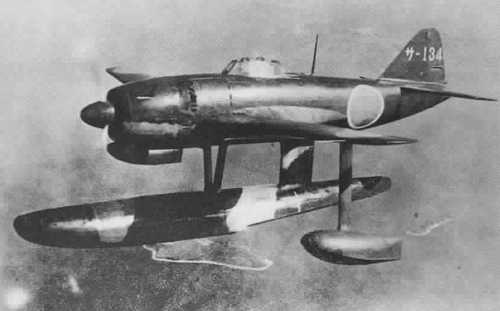An interesting, if somewhat problematic design, the "Kyofu" or (to the Americans) "Rex" was a fighter that, due to delays in development, missed its moment in the war. The intention was to produce a single-seater fighter floatplane to serve as fighter cover in situations where the Japanese forces were mounting maritime landings where they possessed no land airfields. In this situation, it would have supplemented carrier-borne fighters, supposedly replacing them (temporarily, one must assume) in suitable cases. Design delays were centred on the problem of dealing with the contrasting torque involved in landing and taking off from water. The original intention was to use a contra-rotating propeller to overcome this problem. However, this presented substantial difficulties in trial, so that a conventional engine/single-propeller model was eventually adopted. This involved an acceptance that the torque issue would not be directly addressed, so that taking off and landing from water would always be slightly tricky for pilots.
By the time the aircraft entered service, Japan was moving to the defensive, so that the situation for which the "Rex" was designed became somewhat academic. Speed was an issue. The "Rex" could manage a top speed of about 490 km/ph. This gave it some advantage against some of the US bombers opposed to it - but the most advanced could outrun it. Also, it did not compare well with US carrier-borne fighters now likely to oppose it - the Grumman F6F "Hellcat" fighter could manage about 610 km/ph., and generally outperformed the somewhat clumsy "Rex". In the end, only 97 (including prototypes and development models) were produced - although the ones that did enter service remained in the front line in a defensive role to the end of the war. Best regards, JR.

